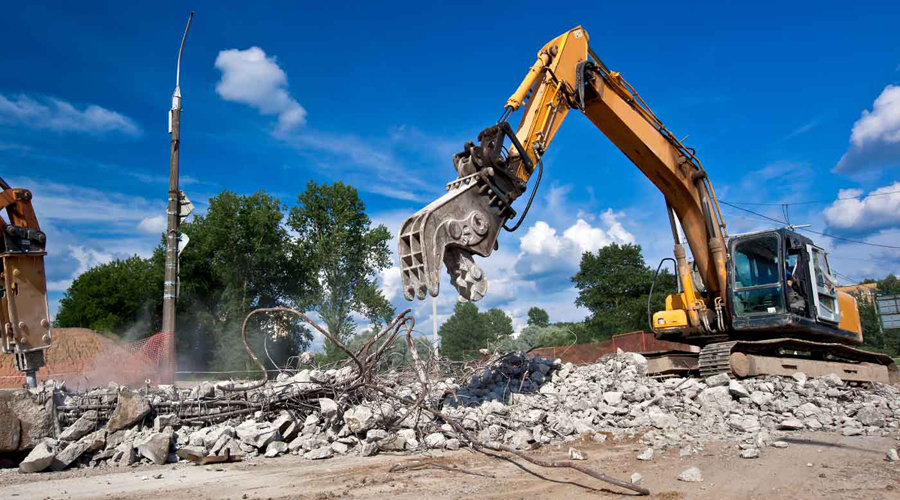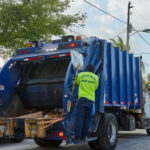Demolition can be a scary word. However, it doesn’t have to be this way. Demolition is the process of taking away an old building and replacing it with something brand new. It could be as simple as knocking down walls, or even complex, like demolishing a partially completed building. These tasks will require specialized techniques and tools, but there is no need to be concerned about these tasks. Demolition doesn’t have to be as difficult as we make it out to be. In reality it’s quite easy with the right information and the right preparation. If you try to remove the Construction waste yourself, you could easily injure yourself. Crew Junk Removal is expert in Construction Waste Removal in New York, NY. They will take care of everything from removing the waste to disposing of it properly so that you can focus on your business. In this blog we’ll explain the steps needed to demolish concrete successfully so that you can start your project quickly and in a safe manner.
Step 1: Analyze the concrete
Before you start tearing apart concrete, you must have a firm grasp on its strength and durability. This will help you to identify the best tools and methods to employ during the demolition. The first step in this process is to identify if you have reinforced or unreinforced concrete. Reinforced concrete happens when mesh or steel bars are added to the mix at the time of construction and are used to reinforce it against the tensile forces of concrete. This strengthens it and allows it to withstand a lot more strength than unreinforced concrete. Reinforced concrete is easier to break, but there are a couple of aspects to be on the lookout for. One is the presence of an rebar cage. It is designed to protect the steel from exposure. Other objects are embedded, such as gravel, wire mesh and sand that were added as part of the concrete’s original construction. Another thing to remember is that you need to be careful of the concrete itself. It can be very dangerous to your health if you aren’t adequately protected.
Step 2: Mark the Area to be Demolished
Before you start to break into the cement, it is important to mark the areas you’ll be tearing down. This will permit other workers to stay clear of areas that aren’t taken down and helps keep you secure while you work. There are a few different ways to mark zones, and it is important to choose the one that best is suited to your specific project. Handheld flags – using flags handheld is the most efficient method to mark the areas that are going to be destroyed when you have smaller areas that require to be designated. Flags are simple to put up and you can put them wherever you’d like. Tripods – If you have more space that needs being marked using tripods is an excellent option. Tripods are easy to put up and are able to be moved as needed. Signs – If you are working on a large-scale project, you could use signs to mark areas that require to be destroyed.
Step 3: Use Bench-marking Tools
Once you’ve marked areas to be destroyed, you can begin using bench-marking equipment. These tools can help you remove the debris without exposing rebar or without causing damage to surrounding areas. You can also hire Crew Junk Removal who are experienced in handling all types of construction debris, and they will make sure the job is done quickly and safely. They offer Comprehensive Construction Debris Removal Services in New York, NY. There are two kinds of bench marking tools can be used such as chisels and pry bars. Pry Bars Pry bars are one of the most efficient methods to break the concrete. They make use of leverage to break the concrete and do not require any digging or digging. Chisels – While a pry bar is an excellent tool for general demolition, you might need to break down rebar. In this case, chisels are the ideal way to take the necessary steps.
Step 4: Utilize Rotational Tools
Instruments that rotate, such as the jackhammer can be utilized to break large areas of concrete quickly. However, they can also risk a lot of harm. If you want to use a rotational tool efficiently, ensure that it is properly set up and that you’re wearing the appropriate protective gear. When you use a rotating tool, you should dig holes in the concrete with a chisel, and then use the jackhammer to break up the concrete. If you plan to cut up a large section of concrete, it is essential to use a large-diameter rotational tool. This will make the job simpler and faster. When choosing a rotational tool you must ensure that it is equipped with the right RPMs and speed of swing to complete the task.
Step 5: Hook and Chain Saw Use
While a rotating tool can break up large areas of concrete in a short time, it can also be extremely risky. If you are working on projects of large scale it is advisable to think about making use of a hook and chain saw. Chain and hook saws are similar in nature to rotating tools. They are highly effective in breaking down concrete, and they’re also safer than rotating tools. There are two kinds of chain and hook saws which are electric and gas-powered. Both have their pros and cons. Gas-powered chainsaws are more efficient and easier to operate, however they generate more noise, while electric saws are quieter, however they take longer.
Step 6: Rebuilding After Concrete Demolition
If you’ve destroyed an object, you’ll need to rebuild. This will depend on the specific project, but it is the primary thing to be aware of when rebuilding is to ensure that you put in an concrete slab. Concrete slabs are essential since they can support any new structures you construct. They will prevent any future issues that may arise due to uneven ground. If you are building something that needs to be load-bearing, such as the construction of a small-scale home, you should make sure that you pour concrete slabs that are reinforced. They are made to take on more weight and pressure than standard slabs.
Conclusion
Concrete demolition can be a dangerous job that requires specific tools and training. Before you begin your demolition project, be sure you understand what concrete is made of and how strong it is to ensure you choose the right tools to complete the task. Once you start, make sure not to crack the concrete in a way which exposes rebar. When you’re done, you’ll be required to pour a brand new slab to support any new structures that are constructed on the site.





